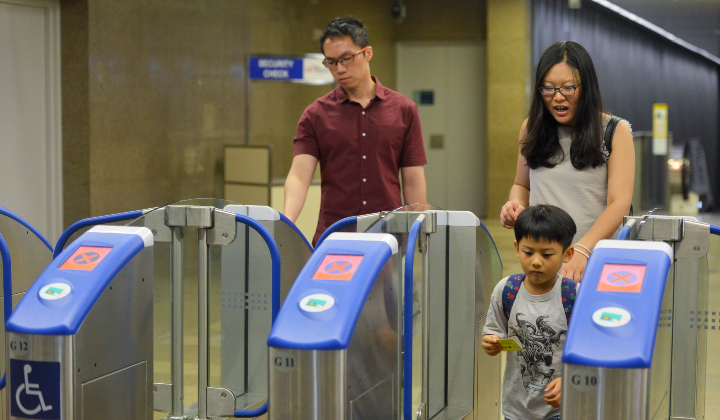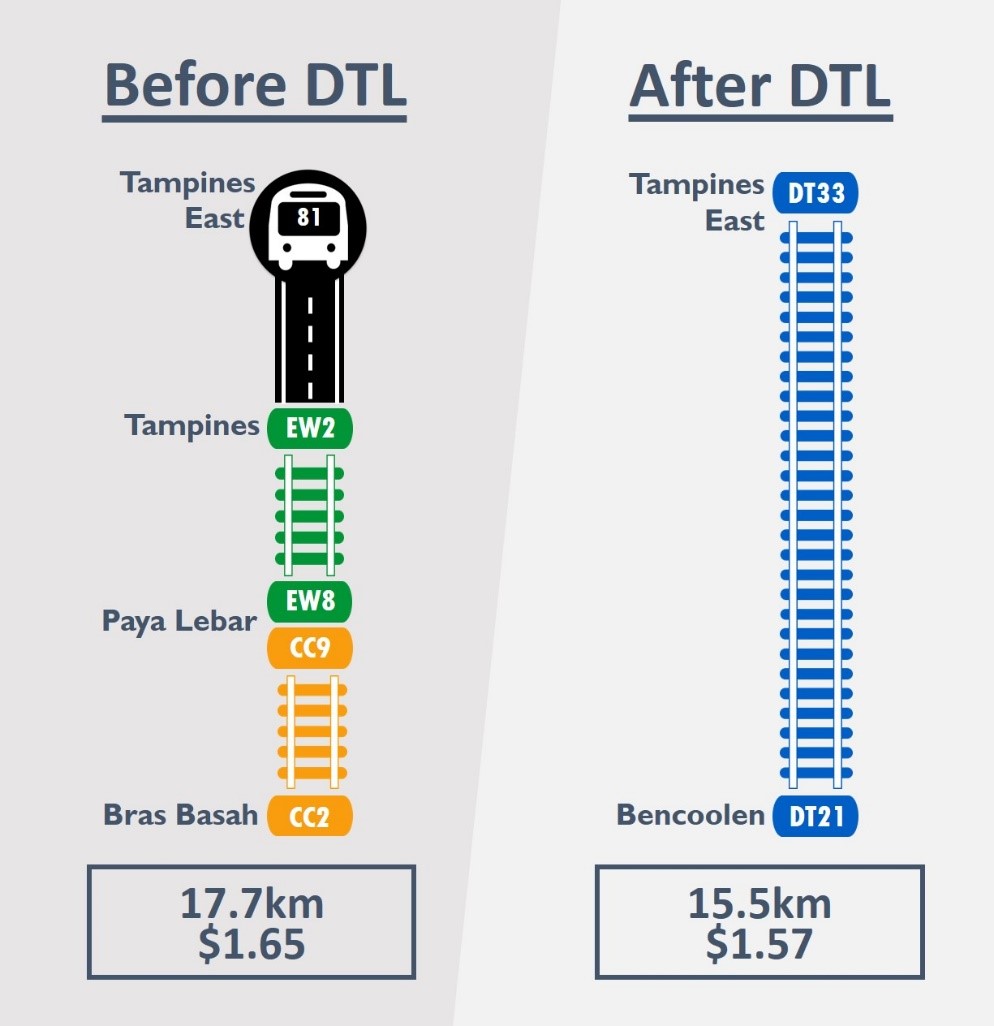The Fare Questions

1. PTC has announced the quantum for the 2018 fare review exercise to be 4.3%. This is the first time the figure has been positive, after three consecutive years of fare decreases, driven largely by falling energy prices.
2. In the 2015 fare exercise, bus and train fares were reduced by up to 4 cents. In the 2016 exercise, we saw fare reductions of up to 27 cents through the simplification of our fare structure, and in the most recent round of fare adjustments, weekday rail trips beginning before 7.45 am saw a discount of up to 50 cents. These changes are significant.
3. During the last year, however, energy prices have rebounded, contributing substantially to the fare adjustment quantum for 2018. The network capacity factor (NCF), a new component in the fare adjustment formula, also adds to the quantum. As regular commuters who have enjoyed significant savings for the last few years, we are naturally anxious about how much more our bus and train rides will cost with the upcoming fare adjustment. Will it be a single-digit adjustment as in the past for most of us who pay card fares, or will it be more? I am quite sure one or more of these thoughts would have crossed our minds.
Impact on Commuters a Key Consideration
4. Whatever the actual amount may be, you can be assured that the PTC will ensure fare affordability for our commuters. We are especially mindful of how these fare adjustments may affect the more vulnerable segments of the commuting public. This is why we closely track the affordability of public transport fares of Singaporean households in the 2nd quintile income group (representing the average commuter) as well as those in the 2nd decile income group (representing the lower income commuter).
5. Over the last decade, the Public Transport Affordability Index (PTAI) has dropped from 2.9% to 1.9% for the average public transport commuter, and from 4.1% to 2.7% for lower-income households. This means that on average, fares have become more affordable as commuters have consistently seen their income rise faster than their public transport expenditure over the last ten years. In the past three years alone, fares have seen a total reduction of 8.3%, while average wages have grown by about 10% in the same period.
6. In fact, a recent benchmarking study, done independently by McKinsey, a global management consulting firm, ranked Singapore’s public transport system as the most affordable across 24 cities globally. Likewise, PTC’s 2016 rail fares benchmarking study across 35 cities within North America, Europe, Australia and Asia also found that Singapore has one of the lowest rail fares.
Sharing in a Sustainable Public Transport System
7. As Singaporeans, we are all co-owners of our public transport system. I am quite sure I speak for many of us, that despite the occasional hiccups, we are appreciative of the public transport system we have. Many have even made the switch from cars to public transport, with peak hour public transport mode share rising from 63% in 2012 to 67% in 2016. Such improvements in connectivity have provided commuters with not only more choices, but also shorter travel distances and fare savings for many. I will share more on this later.
8. All of this is possible only because of the hard work of our public transport workers and the huge investments put into building and running the system. But where does all the money come from? Who should be paying for this?
9. Indeed, one may argue that public transport should be provided as a public good and therefore heavily subsidised. The Government has always fully borne the cost of building public transport civil infrastructure. With the transition to the new public transport industry models over the last few years, they have also been footing a large portion of the recurrent costs of providing public transport services. In fact, over the next five years, the Government has announced substantial subsidies of $20 billion for public transport civil infrastructure, $5 billion for public bus services and $4 billion to renew our rail operating assets. However, if we have to continue expanding our network capacity, it is not sustainable for the Government to continue bearing all the recurrent cost increases. After all, every dollar spent on transport is one less dollar for other necessities like education and healthcare! As a fellow beneficiary and regular user of our public transport system, I believe it is fair that commuters like you and I share the costs of running an improved system.
Evolving with the Public Transport Landscape - New Network Capacity Factor
10. The current formula retains all the features of the preceding formula albeit with the weights for each component updated to reflect the current cost structure for the public transport sector. It also contains a new component – the Network Capacity Factor or NCF for short. Let me elaborate on how the NCF works.
11. If we were to inject new buses into the system, the bus would be shared by fewer passengers and they have more room to themselves. This would also result in a positive NCF as the capacity of our public transport network would have increased faster than the increase in commuter demand. On the other hand, if we were to keep the bus fleet unchanged even as more passengers use our bus services, you would experience more crowding on your daily commutes. This would result in a negative NCF. The NCF is thus a fair and transparent way to account for changes in public transport network capacity relative to commuter demand. More importantly, positive NCF could also mean greater connectivity in the form of new bus services or new rail lines.
12. Let’s take an example of a tertiary student who lives in Tampines East and studies at the Singapore Management University (SMU). Before DTL3 commenced operations in October last year, this student would have to take a bus to Tampines MRT station, hop on to the East-West Line, transit to the Circle Line at Paya Lebar MRT station, and finally alight at Bras Basah to head for class. Now, with the DTL3, the student simply has to hop on the train at Tampines East MRT station and alight at Bencoolen to get to school. This translates to a shorter travel distance of 2.2 km and savings of 8 cents in fares for each trip. Taking a typical school year of 30 weeks, the student will see a total of $24 in savings and travel 660 km less, or in other words, about a round trip to Kuala Lumpur.

13. For the 2018 FRE, the NCF is 3%, with more than two-thirds due to enhanced bus network capacity. This could be a likely factor contributing to the continual improvements in bus commuter satisfaction in PTC’s Public Transport Customer Satisfaction Survey over the last five years.
New Formula, Same Principled and Transparent Approach to Fare Adjustment
14. When we last saw a fare increase in the 2014 Fare Review Exercise, fares were adjusted upwards by 2.8%, which amounted to a 2 to 5 cent broad-based increase in adult fares per journey. Using this as a yardstick, the 4.3% fare adjustment quantum for the 2018 fare review exercise, if granted in full as a broad-based fare adjustment, should not result in fares increasing by more than 10 cents per journey.
15. Fares have come down for the past three consecutive review years, with reductions totalling 8.3%. This is unprecedented, and is a good example of how the PTC has been disciplined in implementing the fare formula. Even as the formula evolves to keep pace with the changing public transport landscape, this principled and transparent approach will not change and is key in striking a good balance between affordability and sustainability.
Vincent Chua
(PTC Council Member)
The views and opinions expressed by Associate Professor Vincent Chua do not necessarily reflect the final decision of the Public Transport Council.
Head (Research) in the Office of the President at the Singapore University of Social Sciences (SUSS), Associate Professor Chua holds a PhD in Economics from the University of Chicago. Contributing to the Council since 1999, he has offered much valuable professional input with his strong academic background and ground experience in public transport. For his contributions to the Council, Associate Professor Chua was awarded the Public Service Medal (PBM) in 2007 and the Public Service Star (BBM) in 2015.
